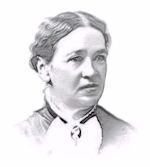Village, St. Helena, S.C., April 23, 1865.
We did go to Charleston to that great celebration, and on the very day that vile assassin was doing his work, or had accomplished it.[1] Such shouts and cheers went up for Lincoln from the freed people of Charleston, at the mention of his name by Garrison at the great meeting in Zion Church, that it must have done him good even in his death. I never saw such enthusiasm as they showed every time he was mentioned. On the island here they are inconsolable and will not believe he is dead. In the church this morning they prayed for him as wounded but still alive, and said that he was their Saviour — that Christ saved them from sin, and he from “Secesh,” and as for the vile Judas who had lifted his hand against him, they prayed the Lord the whirlwind would carry him away, and that he would melt as wax in the fervent heat, and be driven forever from before the Lord. Was n’t it the cunning of the Devil that did the deed; and they are going to prove him insane! When he was wise enough to strike the one in whom all could trust, and whose death would inevitably throw confusion and doubt into the popular mind of the North! And then to single out Seward[2] in hopes that the next Secretary might embroil us with Europe and so give them another chance! It is so hard to wait a week or two before we know what comes next.
But I must tell you of our trip to Charleston. General Saxton gave us all passes, and a large party of teachers went from this island with Mr. Ruggles — good, kind, handsome fellow — to escort us. We stayed at a house kept by the former servants or slaves of Governor Aiken.
I was dreadfully seasick going up, and the day after I got there had to go to bed, and so I missed seeing many things I should have liked to visit. It stood — the house we stayed at — in the very heart of the shelled part of the city, and had ever so many balls through it. The burnt part of the town is the picture of desolation, and the detested “old sugar-house,” as the workhouse was called, looks like a giant in his lair. It was where all the slaves were whipped, and the whipping-room was made with double walls filled in with sand so that the cries could not be heard in the street. The treadmill and all kinds of tortures were inflicted there. I wanted to make sure of the building and asked an old black woman if that was the old sugar-house. “Dat’s it,” she said, “but it’s all played out now.” On Friday we went to Sumter, got good seats in the amphitheatre inside, near the pavilion for the speakers, and had a good opportunity to see all. I think there was not that enthusiasm in Anderson that I expected, and Henry Ward Beecher addressed himself to the “citizens of Charleston,” when there were not a dozen there. He spoke very much by note, and quite without fire.
At Sumter I bought several photographs, and send you one of the face [of the fortress] farthest from Wagner, Gregg, and our assailing forts, and consequently pretty well preserved. The other side is a mass of ruins and big balls. If you look closely you will see rows of basket-work, filled with sand, repairing a break. The whole inside of the fort is lined with them.
The next day was the grand day, however, when Wilson, Garrison, Thompson, Kelly, Tilton, and others spoke. Redpath mentioned John Brown’s name, and asked the great congregation to sing his favorite hymn, “Blow ye the Trumpet,” or “Year of Jubilee.”
I spoke to Judge Kelly afterwards and had a nice promise from him that he would send me all his speeches. We came home on Sunday and found all the missing boxes arrived, — or nearly all, — among them, mine. You do not know how intensely we all enjoy your picture — that exquisite sea-view. How could you spare me such a picture! I lie down on our sofa which faces it, and do so heartily enter into the freshness of it that it is refreshing in this hot weather. Many thanks to you.
[1] Abraham Lincoln was assassinated April 14, 1865.
[2] An attempt was also made to assassinate Secretary of State Seward.


